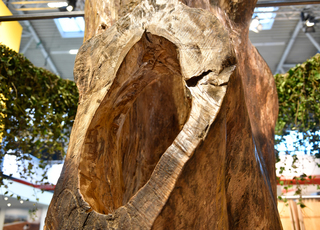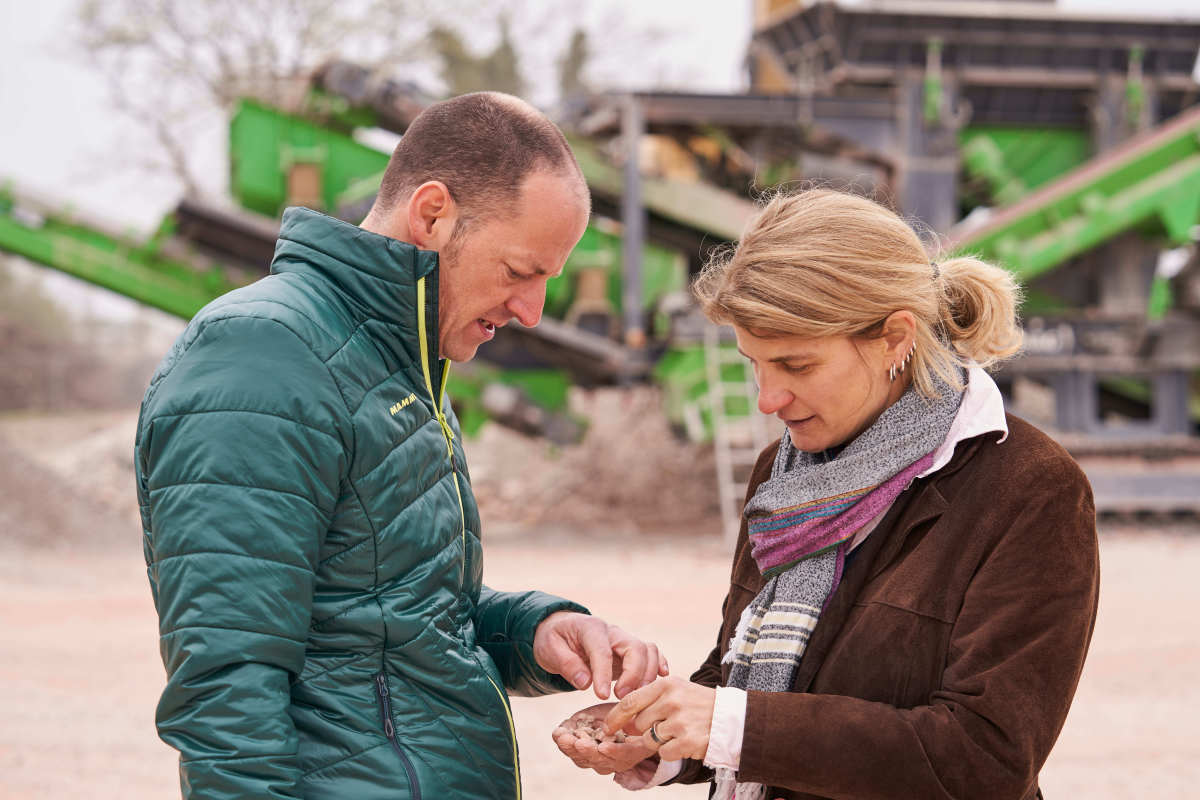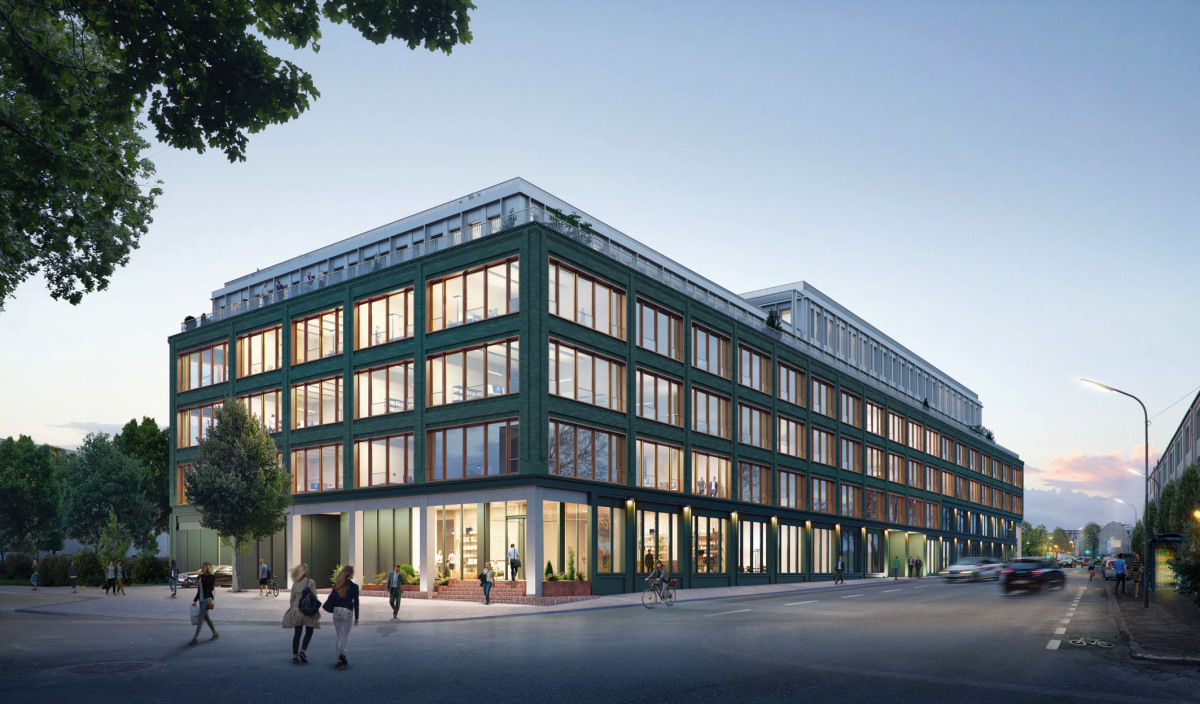Circular economy conserves resources and avoids waste
01.04.2023

Figure: Messe München
The construction industry consumes more resources and produces more waste than any other industrial sector. Climate change, material bottlenecks and scarcity of resources are further increasing the pressure to start a paradigm shift: A departure from a linear economy to a circular one. The goal of the circular economy is to plan and build in a way that results in as little waste as possible, whereby materials are reused rather than simply disposed of. Find out how that can work and what alternative building materials exist at BAU 2023 from April 17 to 22 in Munich.
Raw materials extracted from nature are exploited to create new buildings which, after they have been used, are torn down again and disposed of. This practice has lasted for centuries, but the construction industry can no longer afford to carry on this way. That’s because the industry is responsible for 40 percent of CO2 emissions and more than a third of waste production in Europe. In Germany, waste from construction and demolition makes up more than half of the total waste. The order of the day is therefore circular construction, the reuse of building components and materials in a system that’s as closed as possible. This is based on the cradle-to-cradle principle borrowed from nature, according to which products and raw materials circulate in theoretically endless cycles and do not form any waste products.
The idea has now also reached industry and retailers. At BAU 2023, exhibitors will offer reusable products under the label “ReUsed”, as well as the return of used products. These will then be prepared, declared as used and re-sold. Trading organizations, in which regional and local builders’ merchants come together to procure products in large quantities and on favorable terms, are also saving resources. Here, purchasing is based on actual demand and specifically considers local manufacturers.
Proof, certifications, databases
There is also increasing demand for proof of the sustainability of products and building materials as part of the bidding process. However, manufacturers often find this difficult in the thicket of standards and regulations. The basis is provided by Environmental Product Declarations (EPDs), which are issued by the Institut Bauen und Umwelt (IBU), for example. They contain information about the environmental impact of building materials, construction products and building components. Product or material databases that list recyclable products are relatively new. There, manufacturers can upload their products and, if necessary, have them evaluated immediately. The product information, in turn, flows into the sustainability assessments of entire buildings, which various organizations (DGNB, BNB, BREEAM and LEED) carry out and award certifications for. You can find more information on this topic at BAU.
Urban mining: Great potential for secondary raw materials
The term “urban mining” refers to removing materials that have already been built in urban areas in order to be reused. There is great potential for secondary raw materials. According to the German Environment Agency, an old building with ten residential units will deliver an average of 1,500 tons of material for reuse. Figures published in 2010 indicate that the material in existing buildings and infrastructure adds up to 28 billion tons. In future, there will be material passports to document what is installed and where.
Recycling primarily for road construction and earthworks
It is true that more than 90 percent of the building materials that result from the processing of mineral construction and demolition waste are recycled; however only 20 percent of that goes to asphalt and concrete production. The majority ends up as recyclate in road construction and earthworks, not in building construction, which requires high-quality raw materials. An additional problem is that the recycling potential of traditional building materials such as concrete, metal, glass, brick, plastic or plaster has not yet been adequately researched for many areas of application. One of the many issues is correctly separating materials and construction products that are often glued or screwed together. This is an indispensable prerequisite for returning materials to technical or biological cycles and must therefore be taken into account during the planning phase.
Alternative building materials
Up until now, wood is the only material to have established itself as a renewable raw material. One in four detached and duplex houses in Germany is constructed from wood. Even high-rise buildings, such as the current “Roots” building in the port of Hamburg, are made of wood. This isn’t the case with flax, bamboo, clay, hemp or straw: Although these materials are considered to be the building materials of the future, they are not yet ready to play a major role in architecture or replace conventional building materials. When it comes to tensile and compressive strength, concrete and steel will continue to dominate, at least in the near future.
At BAU: Solutions, presentations, tours, special shows
BAU will show the latest developments in the field of sustainable and recyclable building materials across all exhibition areas. The topics of circular economy and urban mining are also on the agenda in the presentation program (Forum C2 and Communication Area B0). In addition, the special show and the lecture program of the German Sustainable Building Council (DGNB) are themed “Building 2030—sustainable, climate positive and circular”. At its special show and lecture program, the Fraunhofer BAU Alliance offers insights into innovations and solutions on the path to climate neutrality and the circular economy. At its special show, the ift Rosenheim will present building elements that contribute to sustainability and resource conservation through the “cradle to cradle” approach, multifunctionality and appropriate maintenance and disposal concepts. GGT's model property, which highlights the DNA of building in the future, also focuses on the topic of sustainability.
CONTACT
Messe München GmbH
Messegelände
81823 München/Germany
+49 89 949-20720


